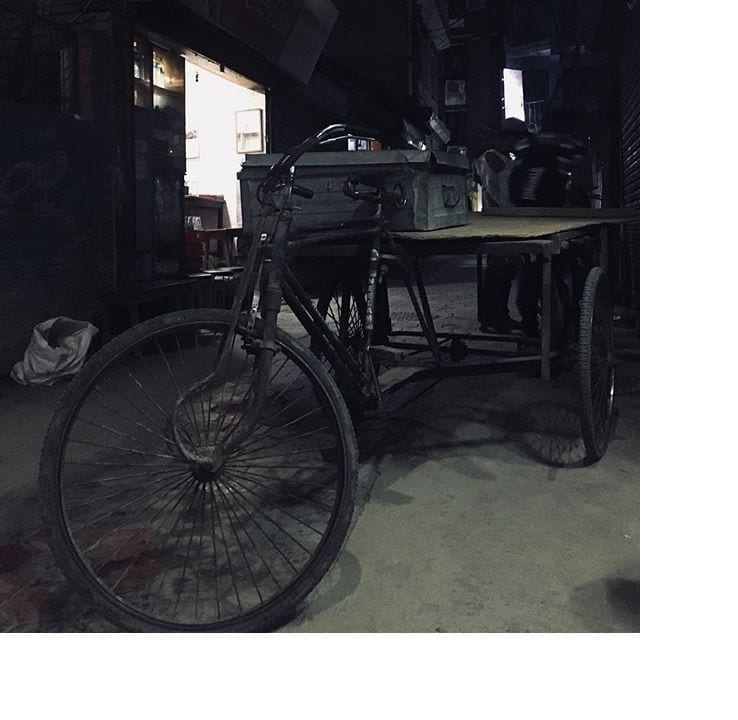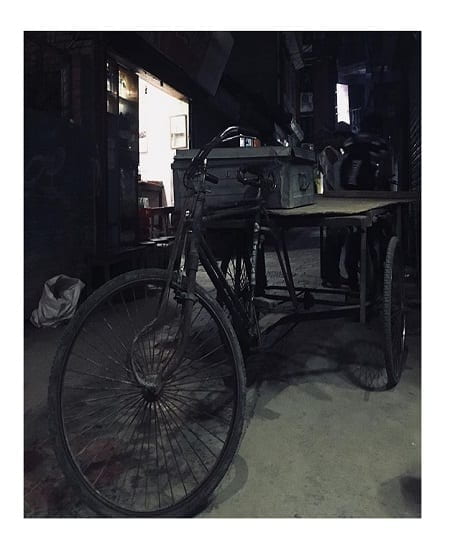
Anytime I found myself venturing through Kathmandu valley this summer in Nepal, I developed a habit of scanning my eyes through the vibrant streets often riddled with endless traffic in sight. Each instance would paint a similar picture. The elderly and aging are visible and cannot be missed even if one tried in Kathmandu. Most head to their local temples to attend aarti and make ritual offerings to deities. Others are seen running errands like picking up a sachet of milk to make chia or catching-up with neighbors on the latest political happenings. And then there are those who simply peer through their windows or stand on their balconies to witness the world unfolding before them with keen eyes. Contrasting this population are those dressed in their uniforms and weaving skillfully through the maddening traffic. Young schoolchildren and college students are vibrant and conspicuous throughout the city as well. What one notices over time is the consistent symbolic absence of individuals between the school and college going age and the aging and elderly. If by any chance you miss the significant absence of the working age population visually, you are bound to hear about it during your engagement with the locals. Every household has someone abroad to study, work or do both. A steady stream of young working-age Nepalis arriving and leaving at the airport is another public space demonstrating this on-going trend of migration in Nepal.
In 2014, more than 520,000 labor permits were issued to Nepalis planning to work abroad as migrant laborers.[1] According to captured data, the number of labor permits issued increases every year. What this data doesn’t capture however are individuals headed to countries where labor permits aren’t needed, or working is facilitated via other formal, informal or undocumented channels (e.g. females working in India or recipients of visas or permanent residence in countries like Canada, United States of America or Australia). Making up for their physical absence is the growing reliance on remittance from migrant workers contributing to increasing household incomes as well as the national GDP of Nepal. As much as 25% of the national GDP consists of remittance from migrant workers with inflows topping as much as USD 5 billion according to estimates by the International Labor Organization in 2013. As such, Nepal is ranked third in the world among countries sourcing the highest proportion of remittance in terms of GDP. The economic benefits of Nepali migrant workers filling niche labor markets in countries such as Malaysia, Korea, Qatar, Saudi Arabia among other such countries are manifold. However, studies exploring the recruitment processes and working conditions of migrant workers have revealed indicators of abuse and exploitation involving forced labor and trafficking.[2] Organizations such as Amnesty International have made repeated calls to prevent and protect migrant workers from adverse outcomes while they sacrifice their time with loved ones to labor in foreign countries in the hopes of a better future.
Being aware of the Nepali migrant labor backdrop and conscious of the policies and politics it entails, I was still taken aback when the subject arose in the context of my summer field research activities in Kathmandu, Nepal. A highly esteemed and experienced health care provider at a well-known public hospital in Nepal was the source of a thought-provoking insight. In the context of our interview on the role of technology in providing health solutions for a country like Nepal, they revealed their on-going voluntary efforts to provide medical counsel for Nepali migrant workers abroad via video platforms such as Skype or directly via phone or text messages. They further explained that there were many contextual factors involved in leading to such interactions from cost, lack of access to medical professionals, language barriers, lack of resources such as time and transportation etc. My key informant further noted that their medical oath prohibited them from denying care to anyone especially individuals like migrant Nepali laborers who are underserved and hard-to-reach when adopting the lens of community and population health. Still, they worried that the counsel they provided may not be up-to-par relative to if the person would have been in front of them or if the interaction was aided by another medical professional on the other end even if they were trained front-line workers or nurse aids with minimal medical education and training. This medical professional noted that they include a verbal and written disclaimer anytime they provide medical counsel for migrant Nepali workers. They felt this is the best they can do under the current regulatory framework for telehealth and mobile health in Nepal or rather lack thereof. They were hopeful that guidelines and frameworks to facilitate such interactions would be prioritized and developed by the Nepali government soon, so they wouldn’t have to operate within a gray area.
Processing what this key informant shared, I began to again marvel at the role of technology in connecting individuals in-need and filling systematic gaps before it even becomes evident with data and trends over time. The survey administered by Amnesty International to assess Nepali migrant needs was indeed also conducted via mobile phones. Making the not-so-easily reachable accessible is a boon for researchers looking to cover ground where once it might have been incredibly resource intensive to be able to do so. In the context of migration and immigration, the solutions and needs appear to operate at multiple ecological levels. Policies and regulatory frameworks are necessary to monitor and govern the pathways where such interactions are happening. Awareness and education might be required for governing bodies and medical professionals to understand this phenomenon. Data is critical to understand how these interactions are unfolding and what health and livelihood needs exist among migrant Nepali workers. While the focus of my research wasn’t on migrant Nepali workers as a population, the use of information and communications technologies (ICTs) has been identified as a potential tool utilized by this population to manage their health concerns as one of my research findings.[3]
As Nepal moves towards its mandate of universal health coverage and aspires to establish digital governance measures, addressing the health needs of migrant Nepali workers facilitated by telemedicine programs offered by Nepalese medical providers is a topic that requires further deliberation and action. Similarly, researchers and technologists must come together to understand this phenomenon and provide recommendations to policy-makers and practitioners to enable and diffuse any resulting innovations that are likely to make the necessary impact on improving health outcomes for migrant Nepali workers. The potential for replicating or adapting these solutions towards other migrant populations globally is another impetus for funding and conducting research in this area. Therefore, there are roles to be played by individuals and organizations alike in understanding and addressing migrant health needs by leveraging the potential of ICTs.
[1] http://www.ilo.org/kathmandu/areasofwork/labour-migration/lang–en/index.htm
[2] https://www.amnesty.org/en/latest/news/2017/12/nepal-migrant-workers-failed-by-government-exploited-by-businesses/
[3] https://www.futurehealthindex.com/2018/03/05/care-at-the-margins/
 Ichhya Pant works at the intersection health, evaluation, data and information and communication technologies (ICTs) with a focus on vulnerable population such as immigrants, refugees, women and children. Currently, she serves as a Research Scientist focusing on monitoring and evaluation on the RANI Project which aims to test whether a multi-level social norms based intervention will reduce anemia in women of reproductive age in Odisha, India. To learn more about her project work to date or thought leadership in her areas of interest, please connect with her on LinkedIn or Research Gate.
Ichhya Pant works at the intersection health, evaluation, data and information and communication technologies (ICTs) with a focus on vulnerable population such as immigrants, refugees, women and children. Currently, she serves as a Research Scientist focusing on monitoring and evaluation on the RANI Project which aims to test whether a multi-level social norms based intervention will reduce anemia in women of reproductive age in Odisha, India. To learn more about her project work to date or thought leadership in her areas of interest, please connect with her on LinkedIn or Research Gate.


